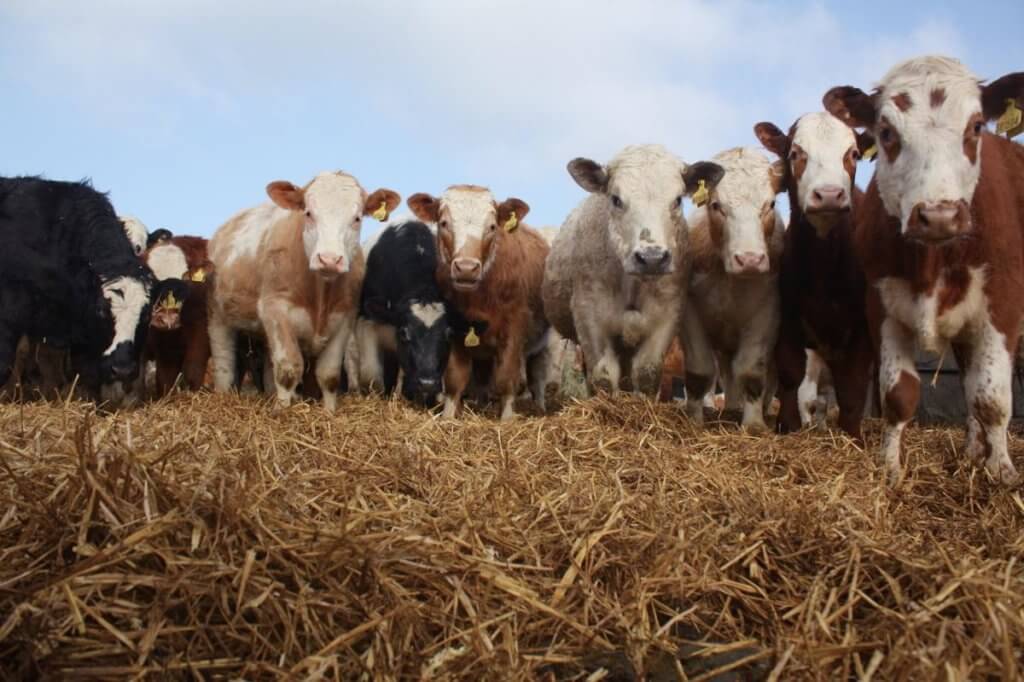Using straw to stretch feed supplies

When hay supplies are low and hay prices skyrocketing, differing options for feeding your herd can be considered. Today, we’re looking at an increasingly common practice – feeding straw to livestock during the winter period or the driest months. What are the benefits of this practice?
Straw can be used extensively under certain conditions.
If the best hay available should be reserved for producing cows (lactating dairy cows or suckler cows with calf at foot), dry cows up to six weeks away from calving or heifers can be fed with straw or hay of lower quality (e.g. carryover from last year’s stock).
Straw is an excellent “filler” and the previous generations of farmers were using straw to simply fill up their cattle and keep them full. In addition to having a feeling of satiety which reduces the stress of the animals, the rumination produces heat, which helps provide contentment in cold weather. Thus, digestible nutrients are made available to meet the nutritional needs of the herd.
Good quality straw is a surprisingly good energy source for ruminants. Energy contents of straw (Total Digestible Nutrients or TDN) vary from 25% to 55%, meaning that straw can be considered much more than just a filler, providing a significant proportion of energy needs. However, straw is very low in protein (only 4-5%) so the ration must include an adequate source of protein, minerals and vitamins.
Dairy cows and heifers
Given the low feed value of straw, feeding heifers with straw requires a supplement of concentrates to support winter growth. The body condition should also be monitored carefully.
To encourage the heifers to eat, the straw must be well preserved and palatable. Oat straw is more palatable than barley straw, while barley straw is more palatable than wheat straw. Since oat straw is also the highest in energy content, it is the best choice. Adding liquid feed such as molasses can improve feed intake and palatability.
It is always good to offer Remember also to provide mineral or salt blocks that will stimulate drinking.
For mature lactating dairy cows, straw intake should be very limited to avoid a rapid decrease in milk production.
It is still beneficial to add a bit of straw in the dairy herd diet to act as a filler, but also to increase fibre intake that stimulates the rumen which is absolutely necessary for the animals housed indoors in winter without regular access to grass.
Suckler cows
For breeding heifers and suckler cows, straw can replace a significant proportion of the missing forage.
Straw can be used as the main roughage in the ration of heifers over 15 months of age and of suckler cows before the eighth month of gestation in good body condition.
Straw can also be used to supplement animals in the pasture during winter months or in summer in case of a drought. Liquid feed such as molasses can be added to the straw to improve palatability and provide some protein.
Which type of equipment to feed out straw?
If you are using a TMR/mixer wagon on your farm, it is best to thoroughly mix hay (and other feed) and straw together. This way, the cows cannot pick the palatable hay first and this will remove competition between cows.
If straw and hay are not mixed, you can alternate between hay and straw each day. Another solution is to spread out the hay and the straw in a long and thin windrow that allows the animals at the bottom of the picking order to feed and prevent wastage. This can be achieved with a Hustler Chainless bale feeder for round and square bales or a Hustler Combi wagon if you need to feed out larger volumes. Click here to watch an Australian farmer feeding out big square bales of hay and straw in a windrow.
You may also like to take a look at some of these great resources:


























